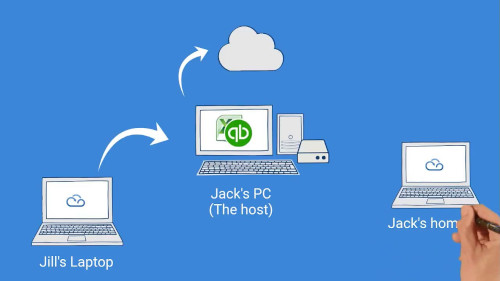The past decade has seen a major shift in the workplace. Companies like Buffer, Zapier, FlexJobs, Basecamp, and Citrix all started as virtual companies and have remained fully remote companies to date. And they are all great examples of successful remote work companies.
Most white-collar employees can testify that they started their career in cubicles. Change isn’t easy but thanks to COVID 19, the only options available were to adapt or die. Companies have been forced to have remote work as part of their DNA. With the closure of physical doors, businesses have learned to remain virtually open and to keep their teams productive. Along the way, businesses have realized so many benefits of remote work compared to the brick and mortar offices.
Now, being able to run a remote business is the way to go. And it’s not just about sending emails to your remote employees expecting things to sail smoothly from there. You need to take appropriate steps, leverage technology, set clear goals, and utilize effective sources of communication.
Here is a small business guide on how to make sure your remote company works like clockwork.
1. Use the right equipment
Small businesses are in a better position to transition to a remote workforce than others. “Smaller companies are nimble and they can upscale their cloud-based systems” Helmut Krcmar, a professor of computer science in economics at the Technical University Munich. He pointed out that many small businesses are already using the cloud for some of their operations like CRM systems or finance and accounting systems.
However, with permanent work from home schedules, their IT infrastructure needs to be upgraded. Ensure your employees have access to computers with higher RAM so they can work more efficiently and faster. Good monitors, microphones, or headsets. Also, give them access to great internet connections.
2. Leverage on cloud technologies
The cloud is the foundation of remote work. The adoption of cloud technologies has accelerated work from home opportunities as employees can now access company assets and systems wherever they are on their own devices. The employees can have a real-time collaboration on work projects. Thanks to cloud solutions like remote desktops and remote access technologies. A clear indication that the cloud isn’t a quick fix but a solution here to stay.
Also, cloud computing has enhanced the security of business information by using end-to-end data encryption, user-specific passwords, and multi-factor authentications when accessing company data. Over and over again, the cloud has proven to have 24/7 network resilience making it a reliable solution during disaster recovery scenarios.
3. Re-strategize your communication
In an onsite office premise, it’s very easy for employees to walk to a colleague’s desk to get instant feedback on a question. Or have an impromptu coffee break session. Now, chats, video conferences, and calls have replaced the one-on-one meeting making it very difficult to ‘read the room.’ If not handled properly, communication can be slow and the intention or interpretation of messages can be muddled. As a result, small business leaders have to re-think how they communicate.
Also, you can only have operations running smoothly when your team is connected. Luckily, we have so many low-cost platforms that can help ramp up your virtual communication. Video conferencing tools like Zoom, Google Hangouts, Skype, should come in hand.
Here are some tips to help teams feel validated, empowered, and informed regardless of the distance.
Set clear boundaries
Working from the living room makes it hard to establish a proper work boundary. Try helping your employees to create a difference between personal communication and work talk. Ditch the texting. Emphasize on emails or come up with a work-specific chat app like Slack or Teams.
Set clear goals and expectations
You don’t want to leave anything to chance. Communicate the priority projects, deliveries, deadlines, and even the expected working hours. It’s the only way for your team to move together towards achieving common adjectives. Ensure you have daily-check-ins and keep communication lines open in case of mishaps.
Have regular meetings
Don’t get it wrong, you don’t have to have an hour-to-hour update of employee activities. But you need to set regular meetings. You can have weekly video meetups or daily morning stand-ups, to ensure your employees are on track.
Create space for non-work related talk
Employee engagement is essential to remote employees as well. It increases their productivity and loyalty. You can engage your remote workers by having virtual coffee breaks, happy hours, online team building activities, etc.
4. Keep the business on the move
Now that you have the tools to stay connected, it’s time to be productive. You’ll need tools to help you track productivity and to ensure that everyone is aware of the tasks at hand. Small businesses can leverage productivity tools like Trello, Dropbox Business, Google Drive, etc. are affordable options. With this, you can collaborate and keep all projects moving.
5. Hire the right team
Hiring remote workers is one of the most critical decisions for small business owners. Remote workers have the freedom to manage their schedules as well as to get the work done. So you have to know which employees are fit for the role. It is a challenging task with so many people opting for the remote work market. Look for employees with self-awareness, time management, and self-motivating skills. You need people who can deliver without constant supervision.
In the 20th century, a storefront was necessary to start and scale a business. Now, small business owners have the option of going virtual. All you need is a domain name and you’ll still get plenty of footfalls.
While there may be some challenges facing remote companies, it’s still the way for businesses to remain agile, lean, and green.





